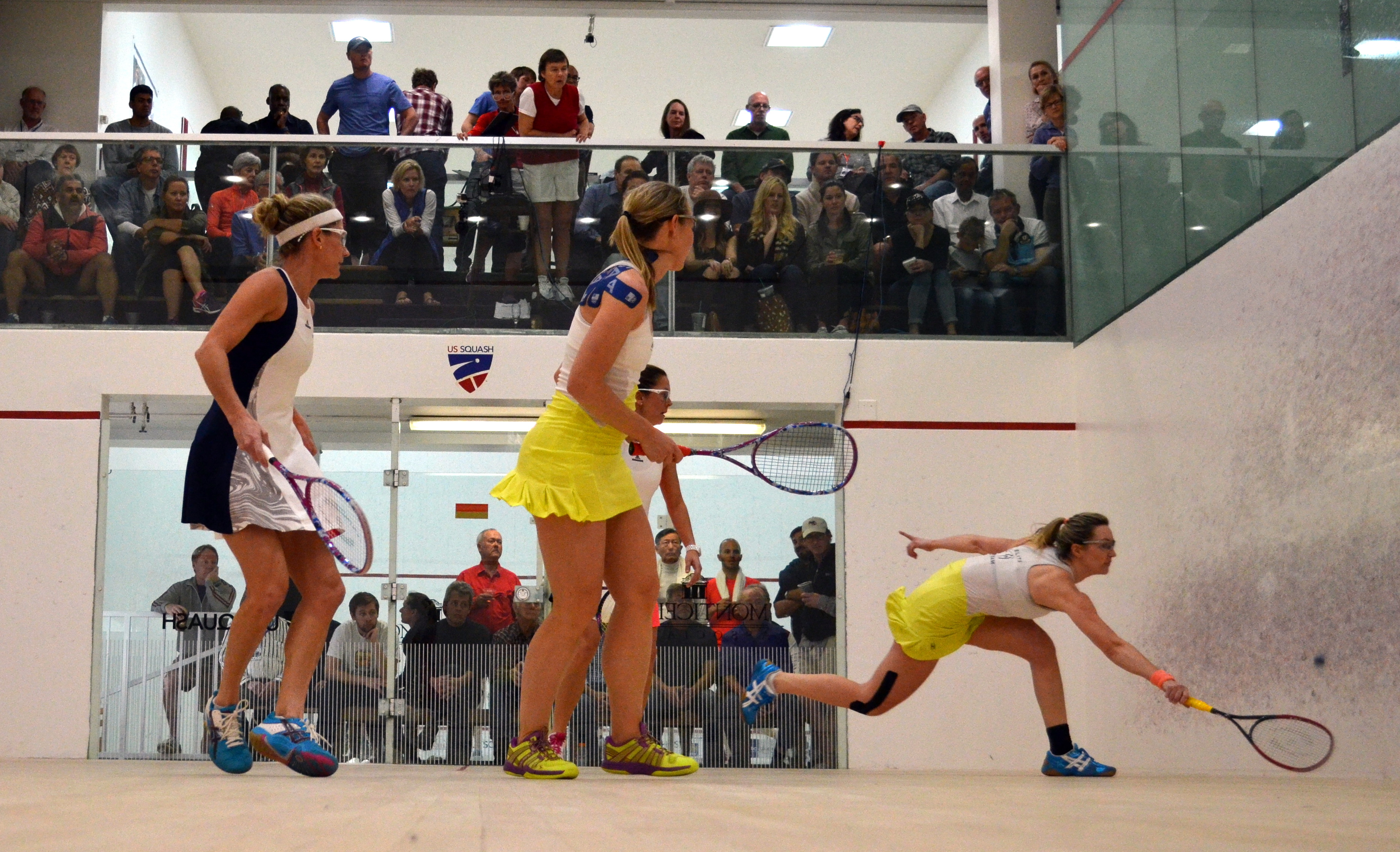By Suzie Pierrepont
I hated squash doubles when I first tried it. I hated the way the ball came off my racquet with no control and the way the ball bounced at the back of the court. I hated how my backhand volley drop would land five feet above the tin or hit the floor, with nothing in between. I really, really, hated how shots I had been conditioned never to play were suddenly being applauded.
I’m not alone. Many top players on the pro tours didn’t grow up playing hardball doubles, only taking up the game after emigrating to North America. They had similar reactions to the game at first. Clive Leach, a world champion in doubles and former world No. 26 in singles, gave me the best advice on how to make the transition: watch.
Watch as much as you can. When you do watch, pick one person and pay attention only to them. Watch how they move. Watch where they hit the ball: not what shot was hit or how fancy it looked but where the ball actually ended up and ask the question, did their opponents have to move to get it?
After I started playing, I made all the classic rookie mistakes. I rallied up and down the line with people. I cleared to the middle. I was reluctant to hit cross courts. I flat out refused to hit a reverse. I was trying to play singles on a doubles court.
In singles we tend to avoid hitting cross-courts as they can open up the court to your opponent; instead we hit straight down the wall from the back of the court to give ourselves time to recover to the T.
This doesn’t work in doubles. The court is just too big. There is no absolute need to recover to the T. It’s a hard habit to break for a singles player. Moreover, even a good straight length from the back of a doubles court will probably be cut off and put in short to the front. The short ball doesn’t even need to be that good to be a winner, because you are starting from such a long way from the ball. If you are stuck in the back, the smart shot is to hit crosscourt. That’s not always an option either so the skid boast, usually a terrible shot on a singles court, is your best bet and—if played well—will get you out of trouble.
Once I had figured out that cross courts and skid boasts were my friend and I started to hold my position in front of the red line, I was finally able to use my best asset, my height. At 6’1” I am one of the tallest woman ever to play professional squash and it has the great advantage on a doubles court of allowing me to volley as much as I possibly can. It is essential that you let as few balls as possible take you away from your position on the red line.
But singles players, however comfortable they get with volleying, struggle with letting the ball go and having their partner take the ball in the back. Letting the ball go allows you to maintain your position higher up the court and gives the player with a better angle on the ball the chance to hit it. It is one of the hardest things to do as a singles player. A singles player instinctively wants to play every ball. It is so unfamiliar to have someone else help you out. Ego tends to get in the way. Letting the ball go feels like you’re saying you aren’t good enough to volley the ball—that it’s too high, too wide or too good—rather than knowing that the dynamics of the game mean it’s not the smart choice for you to hit it. This takes practice and trust: you have to trust that your partner is going to be there to take the ball you haven’t hit.
Peter Briggs, who taught me so much about doubles, said that rule No. 1 is pick a good partner. A good partner might not always be the best player you can find. It might be someone who complements your style or someone you can communicate well with. I think one of the best aspects of doubles is having a partner. After years of playing an individual sport I have found it’s much more fun to play as a team. Then you can let the ball go.


